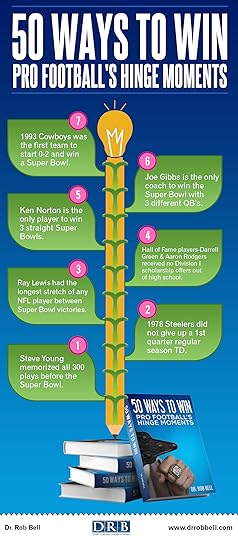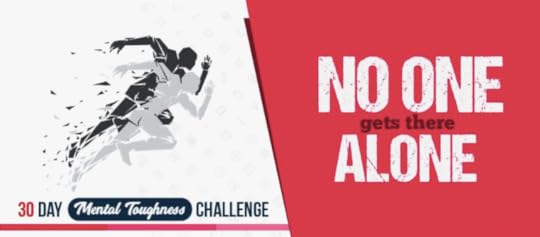Rob Bell's Blog, page 11
October 18, 2019
5 Convincing Reasons Why You Must Challenge Yourself
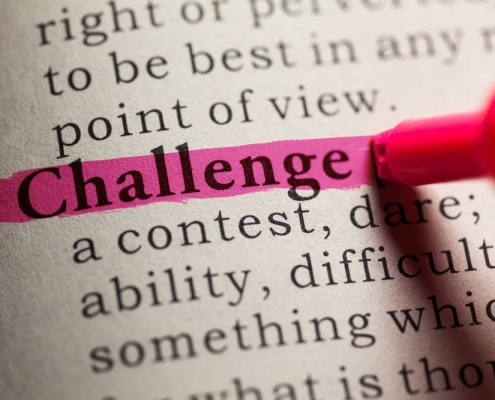
5 Convincing Reasons Why You Must Challenge Yourself
Let’s be blunt here, staying in your comfort zone seems nice and cozy. And, it is. At least for a while. But, if you want to get better, you must challenge yourself.
We build walls around us by staying warm & cozy and remaining in our comfort zone. Before you know it, you’ll have built a mansion of comfort unless you are determined to become the best version of yourself.
The way to seize your hinge moments is to challenge yourself.
Whether it’s a personal, business, or physical challenge, you need to push the
boundaries, dig deep, and overcome.
Even if you start with small daily challenges, you must challenge yourself. The important thing is that you are pushing yourself to break the self-imposed barriers. Challenging yourself can completely change your life and open endless opportunities.
5 ways to challenge yourself
1. Build Confidence
While you can motivate yourself with quotes and affirmations, action is what will give you the lift that you need. When you overcome a difficult challenge, you’ll show yourself that you are better than you give yourself credit for.
You’ll be amazed at how your confidence will grow when you work on yourself by pushing the boundaries. There is so much more in you than you think.
For example, if you feel that you are not good at writing, but want to be a good writer, or wish you were, then write! The best thing you can do is challenge yourself to write something every day.
You can start by sharing your own experience and story. You will soon discover that writing will become more comfortable and you will become more confident in your ability to produce engaging content.
2. Grow into Your Personality
Different life situations change us. Some of these make us better, while others make us bitter. The choices we make every day define us and make us into who we become. That is why challenging yourself is so important.
How will you get to the core of your personality if you don’t exploit all the possibilities?
When you push yourself and make decisions that don’t make you comfortable. That means that you’ll give yourself new goals, different perspectives, new habits, and ultimately become the person that you want to be.
3. Know that You Did Your Best
Living life full of regrets can WILL tear you down. Life is either the pain of discipline OR the pain of regret.
You don’t want to look back and think, “If I had pushed myself just a little harder, who knows…”
“There may be people that have more talent than you, but there’s no excuse for
anyone to work harder than you do.” – Derek Jeter
The thing is that there will always be that small spark of doubt that will ask the question,
“Would it be different if I tried harder and believed more?”
4. Take Control of Your Life
Prove yourself that you are in control of your life and that your decisions are the ones
that shape your future.
Monica Hale, the CEO for Top Writers Review, shared a thought that helps her with life challenges: “Don’t blame fate. Don’t blame the luck. Don’t even try to blame it on the others. You are the boss of your life.”
You must challenge yourself because there is no stopping until you become aware that you are in control.
5. Be Positive and Share the Positivity with Others
The rush that each challenge gives you can’t be described. It’s supposed to be exciting!
That is something you have to experience on your own, you can’t google it or buy it.
The best part of being a positive and accomplished person is that you’ll have the power
to share it with other people. Remember- NO ONE Gets There ALONE. Pass on the knowledge you attained along the way and share that motivation and inspiration with the world.
In the end, it’s your decision. Instead of wondering about how your life would look like if you were braver, it is better to challenge yourself and become the person you are
supposed to be. It won’t be easy, but it will be worth it.
 Daniela McVicker is a content editor and blogger. She graduated from Durham
University and has an MA in Psychological Science. Daniela has been combining her
knowledge of psychology with her writing skills to help others to work on their mental
toughness and their overall performance. She always thrives on recommending the best
practices as well as innovative and useful approaches in her posts.
Daniela McVicker is a content editor and blogger. She graduated from Durham
University and has an MA in Psychological Science. Daniela has been combining her
knowledge of psychology with her writing skills to help others to work on their mental
toughness and their overall performance. She always thrives on recommending the best
practices as well as innovative and useful approaches in her posts.
September 25, 2019
How To Not Feel Bad About Yourself (INFOGRAPHIC)

How To Not Feel Bad About Yourself
No one can tell you how you should feel.
Feeling good all of the time is not a goal, because if we never struggle with adversity, can we truly appreciate everything? Adversity and struggle provide us with perspective and humility which lead to gratitude.
What matters more is how we view ourself and our overall self-concept and identity.
Here are 3 ways to not think so poorly if do you feel bad about yourself?
Change your environment- Vacations CRUSH stay-cations because your environment changes. try changing tour daily route, your morning routine, changing your room, and/or connecting with someone new.
By Default OR Design- Evaluate your relationships. Do you actively seek out to reinforce and share with those close to you? Do they make you feel good about yourself or worse?
Hang out with winners- A funny thing about baseball dugouts is that those hitting well hang out with others who are hitting well. You’re the average of your five closest people, so make sure your environment breeds success and supports you!
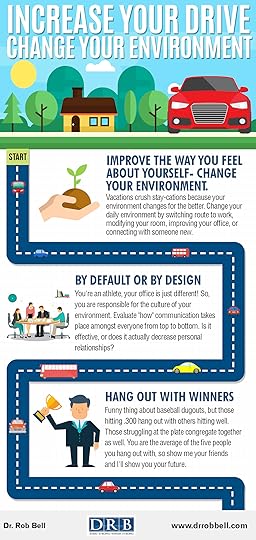
Dr. Rob Bell is a Sport Psychology Coach. His company DRB & Associates is based in Indianapolis. Some clients have included: Indy Eleven, University of Notre Dame, Marriott, and Walgreens. Check out all the books.
Please check out the mental toughness podcast – 15 Minutes of Mental Toughness as we interview expert athletes and coaches about Mental Strength and their Hinge Moment.
September 17, 2019
5 Super Effective Ways To Respond To Adversity (INFOGRAPHIC)
I’ve written six books on mental toughness and in NO FEAR: A Simple Guide to Mental Toughness, the concept of respond, don‘t react was a huge component of mental toughness.
I was caddying in a professional PGA Tour event and I caused my golfer a two-shot penalty. My golfer was the one who responded to the situation and didn’t react.
Think of a reactor, and you get a vision of a nuclear power plant or a chemical bond. A reactor is someone who can’t keep his or her cool under pressure. Picture a responder on the other hand, and you get a first responder, someone who has been trained to handle adversity.
We need to be a responder, not a reactor.
When we respond to adversity, it is devoid of emotion and we usually make good decisions. However, when we react, it is full of emotion and many careers and mistakes have occurred due to a bad reaction.
Adversity is sneaky, it shows up when we are most vulnerable. Just remember that life isn’t fair and you don’t need it to be in order to overcome! Use these five tactics instead.
Breathe and remain calm– Nothing good is achieved when we overreact or panic.
Walk Away- Do not make any immediate replies to email or texts or posts when upset or angry.
Make a Play- Channel your frustration into the next play. USE that energy!
Use a Time-Out- Allow yourself some time to ease the frustration, and focus on the solution, become a problem solver.
Slow Down- Everything appears to speed up after a mistake. When under pressure, be sure to walk slowly, talk slowly, and eat slowly.
These are the five ways you can respond to adversity and not react. Here is an amazing infographic!

Dr. Rob Bell is a Sport Psychology Coach. His company DRB & Associates is based in Indianapolis. Some clients have included: Indy Eleven, University of Notre Dame, Marriott, and Walgreens. Check out all the books.
Please check out the mental toughness podcast – 15 Minutes of Mental Toughness as we interview expert athletes and coaches about Mental Strength and their Hinge Moment.
September 9, 2019
7 Awesome Facts Of Super Bowl Champions (INFOGRAPHIC)
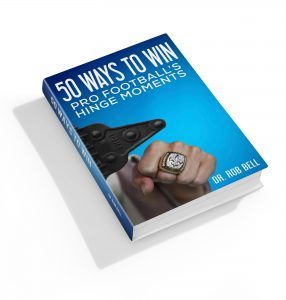
7 Awesome Facts of Super Bowl Champions
The Super Bowl may not represent the two overall best teams of the season, however, it does represent the two teams that played the best. The nature of upsets and playoffs allow anything to happen, which is why we love it.
The margin between winning and losing is so very close that there Hinge moments from every season, that decide the champion.
The reactions and responses from champions vary greatly as well, and they aren’t always what you think.
For example, which Super Bowl Champions quarterback thought to himself during the celebration, “Is that it?”
Which head coach, immediately after winning the Super Bowl, was in the locker room, but now felt like an outsider?
Interesting facts and themes also emerge from the championship seasons.
For instance, for twelve separate seasons, the back-up quarterback became the starting QB for a significant amount of playing time. For three straight seasons, 1999-2001, the back-up QB actually became the Super Bowl-winning QB.
Many teams had themes (e.g., Pound the Rock- 2002 Ravens), a rallying cry (e.g., Whatever it Takes- 1975 Steelers), or a symbolic gesture (e.g., Fun Bunch- 1982 Redskins, Mile High Salute- 1997 Broncos) that emerged throughout the season.
Several Super Bowl Champions also had special identities for units on their teams (e.g., The Expendables- 1973 Dolphins, The Zero Club- 1977 Cowboys, The Hogs- 1982 Redskins).
However, there is ONLY ONE common thread that existed across Super Bowl-winning seasons. If interested in learning about what every super bowl champion possessed, check out the .99 e-book here.
Dr. Rob Bell is a Sport Psychology Coach. His company DRB & Associates is based in Indianapolis. Some clients have included: Indy Eleven, University of Notre Dame, Marriott, and Walgreens. Check out all the books.
Please check out the podcast 15 Minutes of Mental Toughness as we interview expert athletes and coaches about Mental Strength and their Hinge Moment.
August 29, 2019
Stay Focused: How Hall Of Famers Think
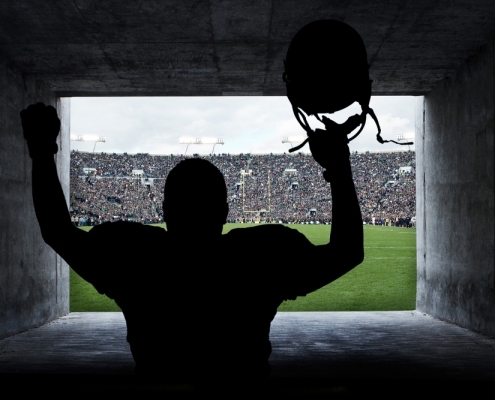
Stay Focused: How Hall of Famers Think
The following blog post is an excerpt from the book- The Hinge: The Importance of Mental Toughness
Here is how the mental game works. We are not only working on our own game, but we are also working on ourselves.
The skills of Motivation, Confidence, Focus, or Re-Focus are what we are working on in order to build our Mental Toughness.
(INFOGRAPHIC) The hierarchy of mental toughness illustrates this point.
The way we get confident is through our focus, and how we re-focus just reveals our confidence.
Hall of Famers are obviously the best and we often look at the Hall of Famers as having an extreme amount of confidence. Maybe this is true, maybe it isn’t. A lot of the best were driven by the fear of NOT being good enough.
The skill we need to look at is Focus.
How did Hall of Famers focus? Did they visualize their end goals and see themselves giving their hall of fame speech?
Or was it something else?
Studying Hall of Famers revealed some amazing insight into how they stay focused. They were focused on this season, this day and this play! They were obsessed with how to prepare and simple get better.
What’s interesting is that the greatest in the world rarely spoke or thought about reaching the actual hall of fame!
Jerry Rice stated, “I never looked down the road and said, ‘Hey look, one day, the Hall of Fame.’”
“Whitey” Aday umpired Alabama softball games for 27 years before being inducted into the Hall of Fame. He said, “I never dreamed I’d be in the Hall of Fame.”
Willie Roaf played offensive tackle in the NFL for 13 seasons: On his day, he said, “I never dreamed I would one day be in the Hall of Fame. I was just thankful every day to play the sport I loved.”
Robin Yount, played with the Brewers for 20 years and had the most hist of any MLB’er in the 1980s. He said, “I never dreamed of being in the Hall of Fame. Standing here with all these great players was beyond any of my dreams.”
Herschel Walker once stated, “[my] biggest goal one day was to make it to Atlanta [to live]…you don’t dream about being a professional football player.”
Steven Dietrich played 18 years as a goalie in the National Lacrosse League. When he was inducted into the Hall of Fame in 2012, he said: “As I played my career, I never would have dreamed that this could have happened.”
Barry Larkin, played shortstop for the Cincinnati Reds for 18 seasons, and on his day stated, “I thought about being good, but I never thought about the Hall of Fame.”
Curtis Martin was a running back in the NFL for 10 seasons and grinded his way to the Hall of Fame. He stated, “The Hall of Fame was not even something that I dreamed about dreaming about. It wasn’t even in my thought process.”
Rusty Wallace had over 55 wins during his Nascar career, even winning the Winston Cup. When he was introduced, he said, “Growing up on the short tracks in Missouri, I would have never imagined any of this.”
Thomas “Hit Man” Hearns won four world-boxing titles. “I never imagined being a Hall of Famer.”
“When our first record hit…we thought, ‘we’ve got two years,’” Keith Richards of The Rolling Stones.
Jennifer Capriati won three grand slams during her career, but only after dropping out of the sport early in her professional teenage career. About her Hall of Fame induction, she mentioned, “This is one milestone I thought I’d never achieve.”
Dermontti Dawson played center for the Pittsburgh Steelers for 12 seasons and stated, “You have individual goals for yourself—the Pro Bowl, to be All-Pro—but I never, ever thought of the Hall of Fame.”
Pavel Bure played in the NHL for 12 seasons, the six-time all-star stated, “Growing up I never even thought I would be able to play in the NHL, much less make it into the Hockey Hall of Fame.”
Patrick Ewing, who became the Knicks’ all-time leader in points, rebounds, and blocked shots, said he “never imagined being a part of it.”
Wade Boggs, 12-time MLB all-star, stated, “…never in a million years would I ever thought that I would be on the same stage with all these great Hall of Famers and enshrined to the National Baseball Hall of Fame.”
Edwin Moses, 2 Olympic Gold medals and 107 consecutive victories in the 400M hurdles, once stated even in high school, “I had no ambitions to be an Olympic track star or any kind of athlete.”
The lesson is that the vision that we must possess should be short-term focused.
What do I have to improve upon?
How do I want to act and believe?
What is the vision for my current day self?
What assisted Hall of Famers to stay focused was their ability to re-focus!
Mistakes and major setbacks are going to happen, but the way you reach the Hall is by having a career of consistency. It’s the most underrated mental skill. The ability to re-focus is the second most difficult mental skill. It relies on how we let go of mistakes, let go of resentments, self-pity, and the curse of it all, perfection…
Our hinge becomes a doorstopper if we keep dwelling about the last play, our stats, or our performance. We become stuck if we allow mistakes to bother us so much that we become afraid to make any mistakes at all. That’s not how to stay focused!
Adversity and painful lessons will occur, but what matters most is how we respond to those obstacles! Check-out how these amazing competitors refocused.
In-game 5 of the 1956 World Series, Don Larson pitched the only perfect game in history. His previous outing, game 2, lasted only 1.2 innings while losing the game 13-8.
Hall of Famer Raymond Berry, who retired as the NFL’s all-time reception leader, only caught 12 passes his rookie year in the league for the Colts.
Roger Federer, the best tennis player in history (so far), has won to date seven Wimbledon titles. Yet, he lost in the first round of Wimbledon his first three years of playing.
Taylor Swift was passed over by RCA for a record contract at age 15.
Andre Agassi lost his first three Grand Slam Finals.
Jeff Immelt was hired on September 7, 2001, as CEO of General Electric (GE), the multi-national conglomerate. He was following Jack Welsh, the famous icon. In his first week as a rookie CEO, he watched NBC, which GE owned, and saw two GE-financed planes crash into the Twin Towers that GE insured.
Jim Marshall of the Minnesota Vikings recovered a fumble and ran it the wrong way to the end zone, and threw it out-of-bounds for a safety. The next drive, he sacked the quarterback and forced a fumble which his teammate picked up and ran for a game-winning TD.
Matt Biondi was a favorite to win 7 Gold medals at the 1988 Olympic games. He lost his first two finals, going 0-2. He ended up winning 5 Gold medals at the Games.
Mike Krzyzewski, during his first three seasons at Duke University, had an equivocal record of 38-37, with an ACC in-conference record of just 13-29.
William Jennings Bryan was nominated by his party to run for U.S. President three times and lost every time. He became best known at the end of his life at the 1925 Scopes Monkey Trial. This trial decided the teaching of evolution in schools.
Country singer Trace Adkins was shot and survived. The bullet went through his heart and both lungs.
Danielle Ballengee slipped and fell down a 60-foot cliff while on a training run and spent two days stranded outdoors with a shattered pelvis and internal bleeding. Just 150 days after her accident, she still finished fifth in a 60-mile adventure race.
Jim Abbott, who had only one hand and pitched for 10 years in the Majors, culminated with throwing a no-hitter in 1993. He threw his no-hitter against the Indians, whom he faced the outing before lasting only 4 innings and giving up 7 runs.
Lady GaGa was originally signed to Def Jam Recordings at age 19, but the company let her go after just three months.
George Washington lost more battles than he won and lost his first battle so bad, his daring escape is what saved the entire continental army.
Johnny Unitas’ first pass was intercepted for a touchdown.
Napoleon Hill, author of a best-seller, could not think of a name for his book. Unless he came up with one, the publisher would use the title, Use Your Noodle to Get the Boodle. Hill awoke at 2 a.m. on the deadline date, when the title came to him, Think and Grow Rich.
Roger Bannister finished fourth in the 1952 Olympics. It was this disappointing finish that drove him to break the four-minute mile.
It’s not about the setback, it’s always about the comeback! Can you withstand the hardships and failures that Will happen to bounce back and overcome?
We stay focused by doing our best on TODAY! That’s it! We do have to possess a vision of who we want to become, but this is a short-term type of focus that we develop!
Dr. Rob Bell is a Sport Psychology Coach. His company DRB & Associates is based in Indianapolis. Some clients have included: Indy Eleven, University of Notre Dame, Marriott, and Walgreens. Check out all the books.
Please check out the podcast 15 Minutes of Mental Toughness as we interview expert athletes and coaches about Mental Strength and their Hinge Moment.
August 27, 2019
Accountability is the missing sauce of mental toughness
Accountability is the missing sauce of mental toughness
I knew training for my ironman would be hard. I had approximately 90 days to prepare for this grueling 2.4-mile swim, 112-mile bike, and 26.2-mile run.
Which part of the race or training would be most difficult for you?
The bike was the hardest for me, namely because I didn’t even own a bike and it would be about a 6-hour ride during the actual race.
I had to train hardest for the bike, so I knew I had to join a team. A cycling team. It would be the only way to learn many of the intricacies and nuances and strategies I would need.
5 epic mental toughness lessons from my Ironman
I first found a group ride on a Sunday afternoon with a local bike shop. I showed up uneasy and insecure because I didn’t know anyone, nor had I ever ridden in a large group before. Now, I was an athlete, so I could always handle my own in any athletic sphere.
There were about seven or eight riders ready to go that afternoon as they talked about the instructions and directions. Five of us were going to do a very manageable 33-mile ride, which would be great for my first ride. It was also a “no-drop” ride, meaning everyone stays together. This is opposite of a “no-apology” ride where no one waits for one another and you either keep up or get dropped.
As we entered the backcountry roads in Indiana, the small group of us started to splinter. I was working as hard as I could, going 20 mph, but the lead three riders started to pull away. They got further and further away in the distance until, poof, they were gone. Okay, I thought, I know where this road goes, they’ll be there waiting for us.
When I and the other lone rider showed up to where the road ended at a split, they were gone. They left us!
In a no-drop ride, they dropped us.
It was now just us two. We couldn’t just turn around because we still wanted to get our training ride in and find the other riders. It also was not panic time, we just had to find them on one of the routes.
However, we did not pick the best route.
We rode and rode and while I had a general sense of the roads and direction, there are some back roads that are not friendly, nor conducive to bikers. It became obvious that we did not go in the same direction as the other riders and so we were left to fend for ourselves.
What was not cool was a thunderstorm forming off in the distance. Accountability is the missing piece of mental toughness. There was no accountability for the other riders and they didn’t care. What was supposed to be a 33-mile ride, turned into a forty-nine-mile ride across some heavy traffic and a flat tire.
Let’s just leave it with “I didn’t join that group ride again.” I was fortunate enough to join up with an awesome group of riders in Team Heroes.
What is accountability?
“An obligation or willingness to accept responsibility or to account for one’s actions.”
Too often, however, this goes bad.
I’ve seen the best of intentions on signed contracts, pledges, or agreements. They sound great but rarely work. They are more about looking good rather than actually making a difference. Having people sign agreements is similar to having them commit to SMART GOALS.
People are going to make mistakes and mess up.
Those that signed an agreement or pledge however to NOT mess-up are now bound by law. When and if they do stumble, they are now under the thumb of extreme shame for the mistake.
They often can’t come clean because they are in an abyss. What happens is that they become great liars. The agreement once propped up as a show of pride turns into an awful reminder.
Accountability cannot work that way! Accountability as a secret sauce of mental toughness can only be accomplished if it comes from love, non-judgment, and a place of safety!
Four ways to build accountability
The team must be established. There are group norms and a culture where what happens here, stays here. If a group cannot trust each other and do not feel safe, then accountability won’t work.
People have to determine their own accountability. How do they want to be held accountable? Is there regular follow-up or meetings? Who is excluded or included?
Protect the mission. Accountability works when everyone is committed to protecting the mission. No one person is greater than the mission and if someone’s actions jeopardize the mission, everyone is at risk. If drinking the night before the game puts the team at risk, what will prevent it next time? When people hold each other accountable, it is because there is a greater good at stake and they are just protecting the mission.
Sign an eyeball contract. Coach John Groce has his players form an eyeball contract. The culture is such that in the huddle before practice, players have an eye-ball contract. The eye-ball contract means looking in someone’s eyes and knowing that you will give your best and they will give their best! Eyeball contracts take mental strength.
Dr. Rob Bell is a Sport Psychology Coach. His company DRB & Associates is based in Indianapolis. Some clients have included: Indy Eleven, University of Notre Dame, Marriott, and Walgreens. Check out all the books.
Please check out the podcast 15 Minutes of Mental Toughness as we interview expert athletes and coaches about Mental Strength and their Hinge Moment.
August 24, 2019
Vicarious or Supportive Sport Parents?
 Vicarious Or Supportive Sport Parents
Vicarious Or Supportive Sport ParentsDo you live through your child or with your child?
Your child is having a great season as the post-season approaches. He or she is worried. He or she asks you the question, “What if I lose?”
What is your response?
Vicarious parents would reply along the lines of, “That’s not going to happen, you’re so good” or “You shouldn’t think that way.” If you’re a mom or dad or guardian who responds this way, you’re likely living directly through your child’s success or failure. You still mean well and love your kid, but you’ve just become too emotionally invested in the results.
Still reading?
These types of sport parents, unfortunately, lack the perspective to make rational decisions. They live and die with every play and every game. Their child is the best when he or she wins, and they are the worst when they lose.
All or nothing…
Vicarious folks are as close as possible physically to every practice as they can be.
The Vicarious parent often blames others when important outcomes do not go well.
Vicarious parents are the ones comparing their son or daughter to others.
Vicarious one’s stress out quickly and easily.
Vicarious parents are usually the ones at the games shouting instructions.
Vicarious sport parents feel their child’s success is a reflection of themselves.
Vicarious parents don’t realize they are living through their child.
The Ultimate Sports Parents Guide: How to Have a Great Athlete in 2019
Supportive parents, on the other hand, answers the opening “What if I lose?” question a different way. They approach along the lines of, “Why do you think that?” or “Let’s walk it through…what if you do lose?”
Supportive mothers and fathers provide an environment that remains safe.
They don’t try to solve their kid’s concerns. They encourage their child to think for themselves, come up with their solutions and handle their outcomes. Home is not a fan base. Athletes can rest assured that in the house, no matter how they perform, their identity is not just as an athlete. They have unconditional love and support. Lastly, these children aren’t nagged about their preparation or whether they are nervous before important performances.
Supportive sport parents attend from a distance.
Supportive parents ensure their son or daughter assumes responsibility, not blaming coaches or situations.
Supportive parents stress effort over results.
Supportive parents know their son or daughter’s performance is just a shadow of them, not a reflection.
Supportive parents make sure they aren’t over the top.
Supportive parents are aware of the long-term
Supportive parents don’t “should” on their kids.
The Ultimate Sports Parents Guide: How to Have a Great Athlete in 2019
Both types of parents make sacrifices and difficult decisions for their child along the journey. No one questions whether love and support are there.
Unfortunately, these vicarious or supportive labels are not mutually exclusive. We may sometimes be one type of parent with one child and another style with another. It’s possible for the pendulum to swing to both extremes and even for us to live in the middle.
This is about progress, not perfection; we are going to make mistakes, but that is the point of this book- Don’t “should” on Your Kids: Build Their Mental Toughness How can we help our child build mental toughness? How can we become better, more aware parents in the process?
Think about some of the parents of famous athletes and who comes to mind? Was it a parent that stayed behind the scenes or one that sparked controversy?
One of the most successful sports parents produced two number-one overall NFL draft picks, two Super Bowl-winning quarterbacks, and two Super Bowl MVPs. Archie Manning said it best, “We just tried to raise good kids and have a good family. I don’t like the perception that it (having the boys play pro football) was a plan.”
On the opposite end of the spectrum, a mother of a collegiate basketball player uttered the words to the head coach when asked about her son’s goals, “My goals are his goals.” Okay, then.
Dr. Rob Bell is a Sport Psychology Coach. His company DRB & Associates is based in Indianapolis. Some clients have included: Indy Eleven, University of Notre Dame, Marriott, and Walgreens. Check out all the books.
Please check out the podcast 15 Minutes of Mental Toughness as we interview expert athletes and coaches about Mental Strength and their Hinge Moment.
August 23, 2019
Exploring Four Reasons Why Exercise Really Does Help Clear Your Mind

Exploring Four Reasons Why Exercise Really Does Help Clear Your Mind
It’s very easy to find yourself in a state of mental confusion, exhaustion or weariness in the
modern age when the world can be immensely overwhelming.
However, one helpful tip can be done anywhere really. So, let’s take a look at four reasons why doing exercise is a great way to clear your head.
1. Blood Flow
When you exercise properly there is more blood that is flowing around your body at a higher pressure.
“Research shows us that exercise pushes more blood to the brain. The more blood you have flowing to your brain means more oxygen and overall energy, which helps your brain to perform better”, explains Toni Lord, lifestyle writer at Academized and Australian Help.
The big oxygen boost is a heavily contributing factor to why you will be able to organize your thoughts, to make judgments more clearly, after you have exercised.
2. The Hippocampus
The hippocampus is one of the most crucial parts of the human brain and it is highly active when you exercise.
When the hippocampus gets fired up during exercise and the neurons start fizzing, the brain’s function improves and it’ll help clear your mind. The hippocampus is the most important area of the brain for memory and learning, so when you exercise, you’ll feel as if you are more able to process information, recall things and make plans.
3. Sleep
The first part is that sleep is vital. “Getting a night of good sleep in is one of the healthiest things
you can be doing for your body and your mind.
It is particularly helpful for your mind, increasing the clarity of thought, ability to multitask, to think laterally and to connect concepts to one another”, says Jemima Kline, health blogger at State of Writing and OX Essays. So, getting a good, fulfilling night’s sleep is how to help clear your mind.
Exercise will help you to feel tired at the right times and to get into a regular sleep schedule.
4. A Change Of Scenery
Generally, life keeps us cooped up.
When your days are filled with work it’s pretty likely that you will find yourself spending a lot
of time in a certain place.
Exercise gives you a change of scenery. This could mean running through the park, but it could even just be a trip to the gym. Ideally, getting outside will give you the fresh air that you can sometimes need, and it gives you an opportunity to take a different perspective and help clear your mind. The change of scenery can help you to start to see things in a different perspective which can lead to a clearer thought process.
Your mental state is strongly linked to exercise habits. It’s important to note that you don’t need to be doing a strenuous, grueling workout to experience some of the benefits, although, it will, in part, help with your mental toughness.

Nora Mork is a lifestyle and productivity journalist at UK Writings and Essay Roo. She loves reading, yoga, hiking with her family and sharing stories at blogs, such as Boom Essays service blog.
August 19, 2019
Five Amazing Superfruits That Ward Away Illness
 Five Amazing Superfruits That Ward Away Illness
Five Amazing Superfruits That Ward Away IllnessNobody likes being sick, so, if an alternative was available, you’d choose it.
Well, you don’t need to look for a miracle ‘cure-all’ – nutritional
scientists have discovered five awesome superfruits which are
crammed with minerals, antioxidants, vitamins and all sorts of healthy elements which will boost your immune system and help you to live a healthier life.
These five superfruits can massively impact on your everyday health.
1- Açaí Berries
You may have never heard of these tiny, amazing superfruits, hailing from Brazil.
Compared to other berries, which are often put on pedestals as the ‘healthiest foods’ (i.e., blackberries and blueberries) these Açaí Berries are filled with antioxidants, which will flush out any bad substances from your body and keep your immune system pressure-free and
working naturally.
A common way to enjoy Açaí Berries is in a smoothie, which health-enthusiasts will be very familiar with, but you can also bake them into a healthy, reduced-fat pie or simply enjoying them on their own, as a healthy snack.
2- Bananas
These are a family favorite, but you may not have considered the common banana as an amazing ‘superfruit’.
If your usual snacks just aren’t enough and lead to you still having hunger cravings and reaching for more unhealthy food, then a banana is right for you.
Bananas contain resistant starch – it’s starch fills up your stomach and makes your body feel like it’s full because it doesn’t need any more energy; the banana contains enough on its own, without other snacks! They’re a tasty treat and packed with potassium, which can help you ward off cramps and lower your blood pressure.
3- Goji Berries
Goji Berries, discovered by the ancient Himalayan Monks.
Clearly, the monks had a good feeling about these amazing berries, since today health enthusiasts love them for their unique property of being filled with protein – a good option for vegetarians, but still want to have enough protein.
They are filled with antioxidants, and also some vitamins A and C, which are extremely beneficial to the body. Finally, these berries can help your eyes’ growth and repair, with the inclusion of beta-carotenes within this superfruit.
4- Apples
Apples are actually one of the best amazing superfruits, since they are absolutely filled with fiber, which helps to ‘flush out’ your digestive system and keep it in working order, which is vital to keep your body functioning well.
Apples also contain a few antioxidants, especially in the skin, which can be great for your body and immune system, but the biggest pro for apples has to be the fact that they are available everywhere. If it’s a shop, it most likely sells apples, so you have no excuses for avoiding this wonderful superfruit!
5- Kiwis
Finally, as a bridge between the common and exotic, we have the kiwi, which can
often be seen in households but also holds a certain mysteriousness about it, with
connotations of sandy beaches and golden shores.
While you may know about this fruit, you may not have realized
that these are amazing superfruits, due to having one of the highest amounts of vitamin C of any
fruit.
Also, this superfruit is excellent for pregnant women who want to
keep themselves and their babies healthy, since it contains a high amount of folate,
which will aid their babies’ cell and organ growth, making sure that the babies grow
and form their bodies as well as possible.
Alex Slater, an experienced and influential business strategist and consultant, is an
advisory board member at Academic Brits and PhD Kingdom. He is incredibly
enthusiastic about guiding market newcomers towards the success which he has
enjoyed himself, and loves nothing more than seeing the people he mentors succeed.
As well as this, he writes informational blog posts at Origin Writings, an academic
service website, to a high standard, which he is very proud of.
August 4, 2019
How To Improve Your Mental Game In As Little as 5 Minutes!
How Much Time Do You Want To Devote To Improve Your Mental Game?
Is life predicated on how bad do you really want it?
Are we willing to do the things that we don’t want to do, or simply to do the little things better?
Much of what holds us all back though is getting started. So this guide is aimed at assisting you wherever you are on your journey. It starts with a commitment and answering the question of how much time do you want to invest?
5 Minutes To Improve Your Mental Game?
If you only had 5 minutes to better your mental game. It would have to be focused on getting centered and present.
Breathing is the best practice, but it is about guided breathing and this audio file will do it. Play it when you are driving or involved in another transition of life.
This is the skill that you’ll use everywhere and it’s the simplest to do because we already do it.
Click Here to Download Your Breathing Script
15 Minutes to Improve The Mental Game?
If you only had 15 minutes to improve your game, then watch our film.
It’s about being brave over not having any fear.- NO FEAR: A Simple Guide to Mental Toughness
Improve Your Mental Game in One Hour?
If you wanted one hour to dedicate to building your mental toughness, then listen to our podcast 15 Minutes of Mental Toughness. It is longer than 15 minutes, but think about it, if you read a book, how much information do you really get out of it?
Most likely, it’s ONE great idea.
The same premise is here- You’ll get a valuable 15 minutes out of each episode, guaranteed. You’ll dig our podcast- we interview experts on mental toughness and their hinge moment.
One Day To Train It?
If you have one day, you can certainly do all of the above.
But, if you have a day, then, you’ll want to read the book- NO ONE Gets There ALONE. A life-changing hinge moment is the reason why this book was written and it is ALL about creating a better US. We cannot help out others without also helping out ourselves.
How About One Month To Sky-Rocket Your Mentality?
Now, you’re getting into the big leagues of training.
I love challenges and if you want to be the BEST at getting BETTER, then check out our 30-day Mental Toughness Challenge.
It ONLY starts at the beginning of the month. Every day you’ll receive a new challenge focused on creating a BETTER YOU and a BETTER US.
This is not a quick fix, this is a solution.
Here’s a step-by-step strategy that will completely change the way you live and improve your game.
Dr. Rob Bell is a Sport Psychology Coach. His company DRB & Associates is based in Indianapolis. Some clients have included: Indy Eleven, University of Notre Dame, Marriott, and Walgreens. Check out all the books.
Please check out the podcast 15 Minutes of Mental Toughness as we interview expert athletes and coaches about Mental Strength and their Hinge Moment.


